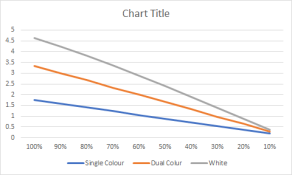Hi,
I am trying to find out how one works out to calculate pixels per power supply, by using percentage's
Is there any formula one can use.
Example, have a 350 watt power supply, if i run at 80% how many pixels,, if I choose to run at 50% how many pixels.
I f I have a 500 watt power supply same again, how many at 80%, 50% or 40%.
12 volt pixels.
The reason is to find out how many pixels I can use for High Dentsity props.
Trying to cut down on power supplies..
Thanks In Advance
Len
I am trying to find out how one works out to calculate pixels per power supply, by using percentage's
Is there any formula one can use.
Example, have a 350 watt power supply, if i run at 80% how many pixels,, if I choose to run at 50% how many pixels.
I f I have a 500 watt power supply same again, how many at 80%, 50% or 40%.
12 volt pixels.
The reason is to find out how many pixels I can use for High Dentsity props.
Trying to cut down on power supplies..
Thanks In Advance
Len




